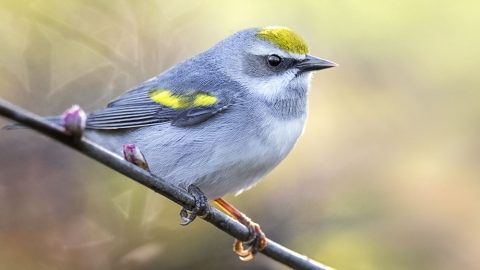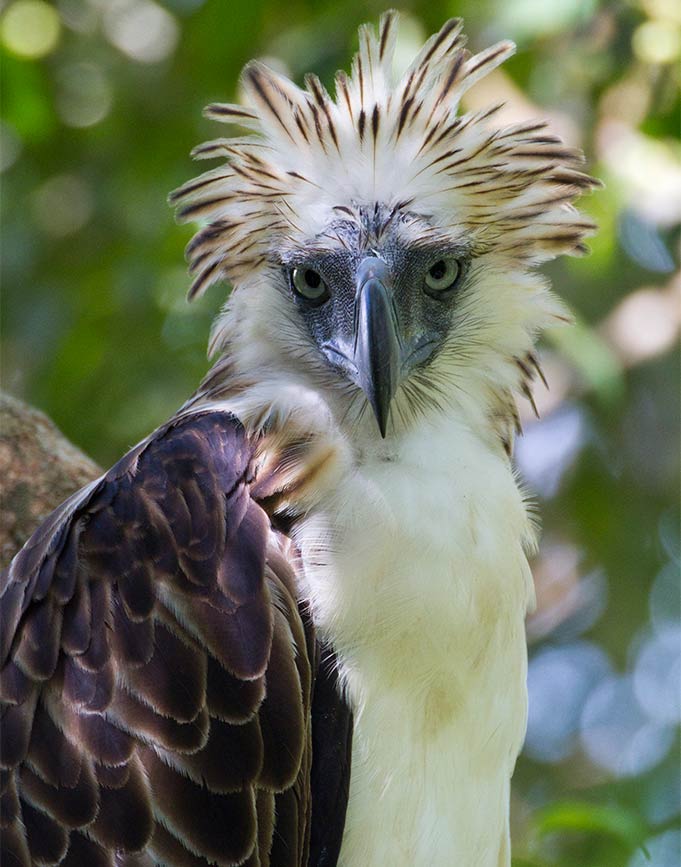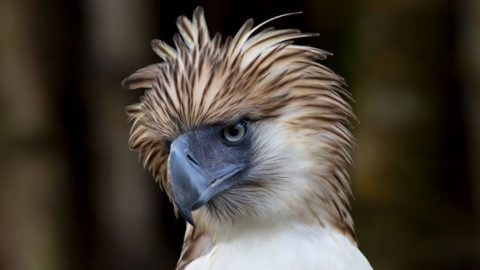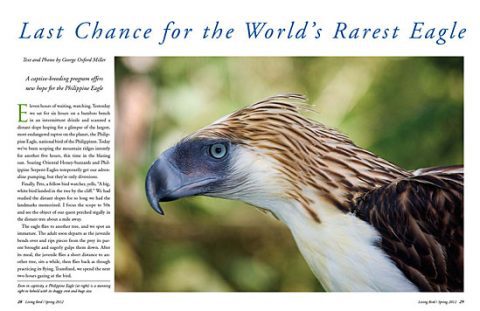Indigenous Forest Guards Achieve Breakthroughs in Protecting the Great Philippine Eagle
By Marc Devokaitis
June 17, 2019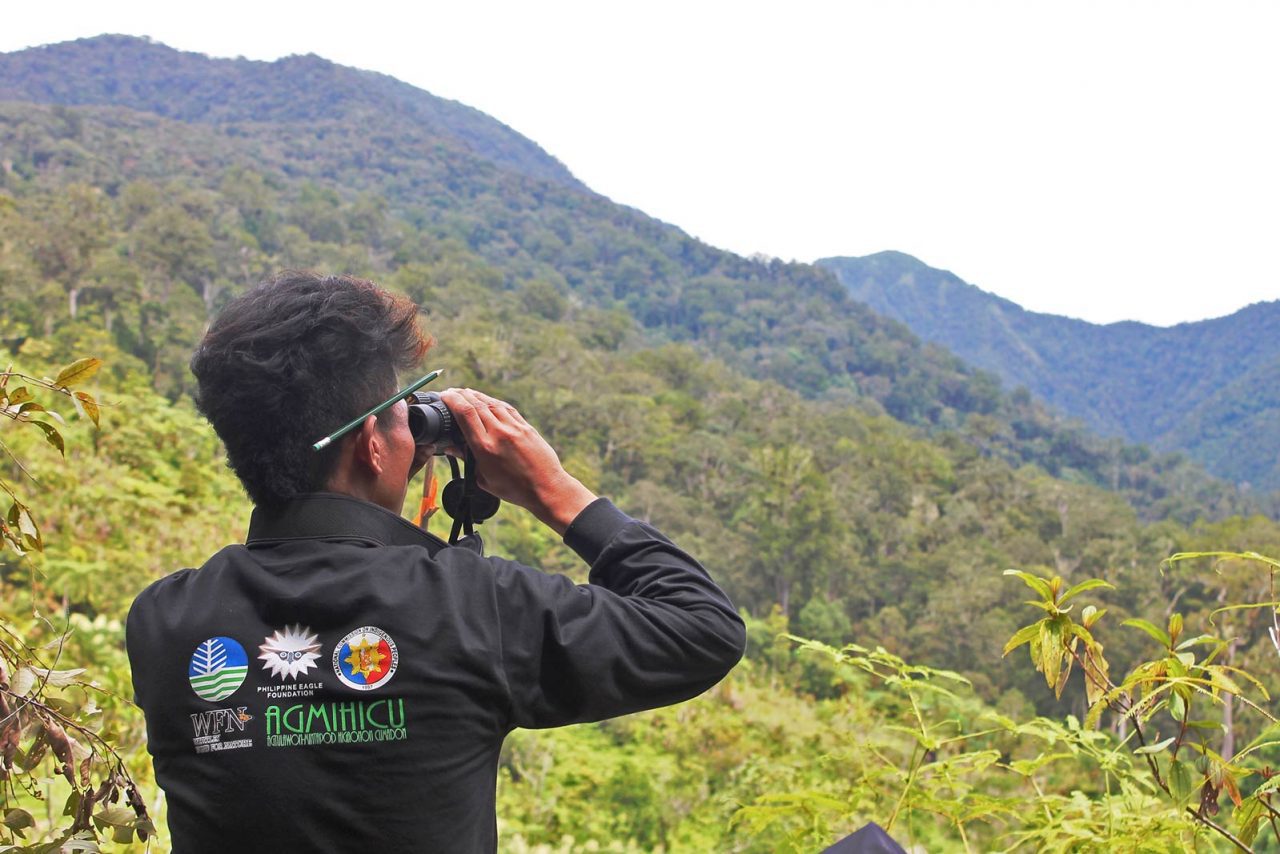
From the Summer 2019 issue of Living Bird magazine. Subscribe now.
With a 7-foot wingspan, the Philippine Eagle is one of the world’s largest raptors, and one of the most endangered (see In the Aerie of the Philippine Eagle). Only a few hundred breeding pairs remain, on just four of the thousands of islands that comprise the Philippines. President Ferdinand Marcos declared the Philippine Eagle to be a national icon back in the 1970s, but that didn’t abate the destruction of more than 80% of the eagle’s forest habitat. Now the eagles have retreated to the last mountaintop forests, where the trees haven’t been cut yet, and where a declaration of a different kind—sacred designations bestowed by the forests’ indigenous owners—are proving to be the species’ best protection.
One of the largest swaths of habitat left for the eagles today is in the forests surrounding Mt. Apo, the Philippines’ highest peak, which covers over 300 square miles on the island of Mindanao. Much of the lowland forest surrounding Mt. Apo was cleared in the 1960s and 1970s to make room for development (including Davao City, which has tripled its population to 2.5 million in the last 50 years). The eagles were forced upslope to the highest elevations of Mt. Apo, where they share the forest with 20,000 people from five distinct indigenous communities.
And the eagles weren’t safe there, either. Traditionally these communities survive by farming and hunting—both for subsistence, and to bring crops and meat to market. Sometimes that hunting included eagles, and sometimes eagle nest trees were cleared to make room for crops. Yet three decades ago when the Philippine Eagle Foundation conducted surveys of where the eagles remained, they found eagle populations holding on in some of the areas with large indigenous communities, such as Mt. Apo.
Initial efforts by the foundation to engage the indigenous communities in eagle conservation sputtered, largely because the foundation and the tribal leaders were “talking past each other,” according to Philippine Eagle Foundation director of research and conservation Jayson Ibanez. Then came a breakthrough in 2009, when Ibanez and his conservation team had a memorable conversation with a tribal elder.
Ibanez recalls that a leader of the Obu Manuvu people told him, “If [you] keep on talking about ‘Protected Areas’ or ‘critically endangered’ species in [your] narratives…they will never understand [you]. But if [you] refer to species and habitats needing protection as Pusaka, then they will start listening.”
Pusaka refers to an ancient practice by the Obu Manuvu of sanctifying objects—including animals and lands—that are considered valuable and sacred to their communities. The concept figures heavily in the philosophies of the Obu Manuvu at Mt. Apo. Animals and lands that are named as Pusaka must not be harmed or violated.
With that concept in mind, the foundation began helping the Obu Manuvu articulate and write down what was important to their communities. The leaders created community development and conservation plans that included a list of Pusaka—including hunting grounds, water systems, animals such as the Philippine Eagle, and even the entire peak of Mt. Apo—and the consequences should any community members violate these sacred entities. Other tribes within Mt. Apo created their own plans based on similar but distinct philosophies. For people inside and outside of the tribes, it became clear that a conservation ethic was part of these indigenous cultures.
The plans also identified able-bodied young men within the communities to become forest guards, to enforce both traditional and modern wildlife laws. The average government forest ranger in the Philippines is charged with protecting around 7,000 hectares (more than 26 square miles) of forest. Now, more than 200 forest guards patrol against wildlife poaching, illegal traps, and illegal slash-and-burn farming over a large portion of Mt. Apo—better than one guard per square mile.
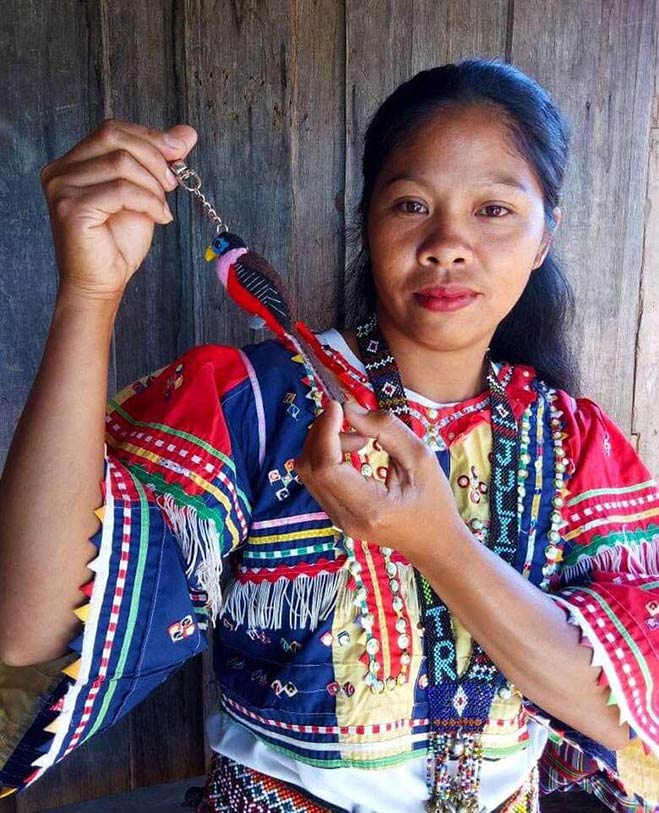
A key to the success of the foundation’s community-based conservation is “addressing the cultural and economic needs of indigenous communities,” according to Philippine Eagle Foundation Executive Director Dennis Salvador. “Tribal elders are concerned about the pull of modernity on the younger generation, the perception that the ‘good life’ is in the city,” says Salvador. “A lack of economic opportunities and a lack of access to formal education remain major challenges for the people in these villages.” The forest guards receive a monthly stipend of around $40 U.S., along with insurance, gear, and clothing. Salvador says this may not sound like a lot, but it makes a real difference to the poor families who live in the uplands.
And the foundation is offering more than just forest guard jobs. The Arakan Manobo community agreed to actively monitor and guard a nearby Philippine Eagle nest in exchange for economic assistance in building a school. (Prior to the new school, the children in the village had to walk a four-hour round-trip to the nearest classroom.) In other villages, women were trained and now earn income by sewing plush Great Philippine Eagle and Philippine Trogon toys and key chains that are sold at the Philippine Eagle Foundation visitor center. The foundation has also helped tribal villages obtain better health care, new water systems, and electricity—all part of the plan to address human needs in Great Philippine Eagle conservation efforts.
More on the Philippine Eagle
The eagles benefit from a forest that is largely free of some of the threats they faced just a few years ago. Since the forest guards have been on duty, Ibanez says they have found fewer illegal traps, fewer illegally burned forests, and there have been no reports of eagles shot or killed. The foundation has also been able to actively monitor seven eagle nest sites at Mt. Apo.
Salvador says the project serves as proof that community-based conservation works: “It shows that you can combine scientific knowledge and indigenous knowledge in conserving the eagles.”

All About Birds
is a free resource
Available for everyone,
funded by donors like you
American Kestrel by Blair Dudeck / Macaulay Library
